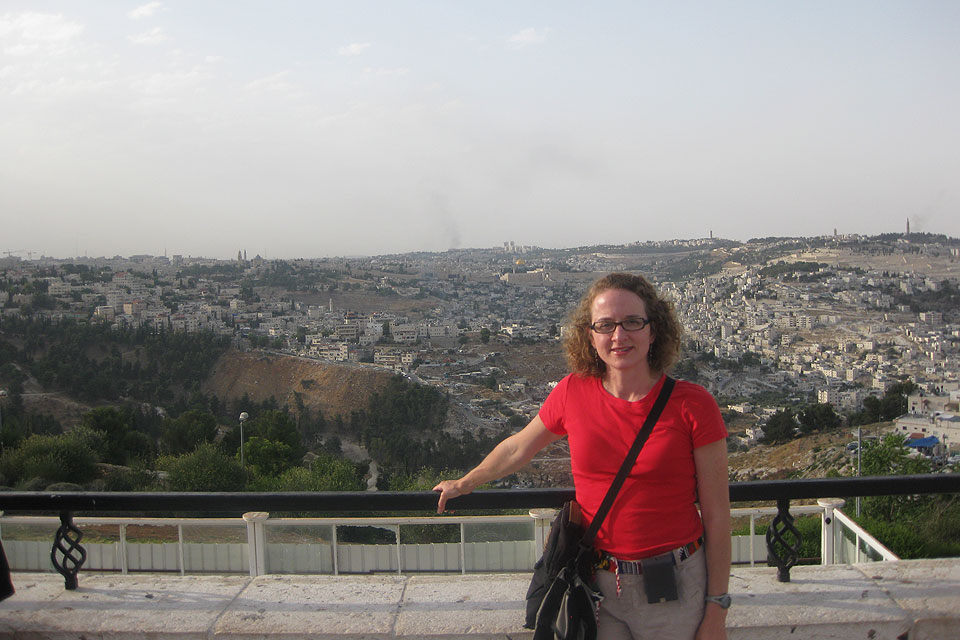Billiken Bookmark: Cathleen Fleck, Ph.D.
Looking for that next great read? In this mini-series, some of Saint Louis University’s published authors share their recommendations for memorable summer reading with their fellow staff, faculty and students.
Launched in summer 2017, SLU authors have recommended an eclectic mix of novels, biographies, food for thought and histories. From the fields of Dunkirk to fantastical realms, past Bookmarks have spanned disciplines and have offered something for readers young and old.
This summer's Bookmarks are no exceptions, as SLU art historian Cathleen Fleck, Ph.D., of the Department of Visual and Performing Arts, offers up a mystery that ends in a twist built on subtle revelations that remind us of the precarious nature of memory and friendship.
Cathleen Fleck, Ph.D.
Three Things about Elsie by Joanna Cannon (The Borough Press, 2018)
An engaging mystery tale that reminds the reader of the fragility of old age is my recommendation for my fellow SLU community members for a summer read.
Florence, an elderly woman who lives in an assisted living facility in Britain called the Cherry Tree Home for the Elderly, is the story's main character. The shifting voice in the story tells her viewpoint as a vulnerable elderly woman fighting to maintain her limited independence with the help of thoughtful Handyman Simon, another speaker. The well-meaning Miss Ambrose is a third narrator who represents the institutional overtaking of such seniors’ individualism.
We learn of the importance of her friends Elsie, who has three special qualities that endear her to Florence, and Jack, who partners with Florence to decipher the identity of a newcomer to Cherry Tree whom she thinks relates to her past.
To explain that connection, the story then weaves Florence’s present life together with a series of tragic events in her youth that plague and confuse her, leading the viewer to a resolution only at the end in a twist of subtle revelations to remind us of the precarious nature of memory, friendships and life.
I have chosen this book in part because it resonated with me on a personal level, as my mother also is in an assisted living facility. The perspective of this physician-author gives some insight and reminds me to empathize with the challenges that she faces as her life narrows from its former expansiveness, once filled with abundant friends and activities, because of her health and circumstances.
The book is also a great summer read that absorbs the reader all the way through with its fluid viewpoints, wonderful characters, and underlying mystery.
My own writing on medieval art history relates to this book in a fundamental way: I too try to get into the mind of others to determine their motivations and stories. In my book The Clement Bible at the Medieval Courts of Naples and Avignon: A Story of Papal Power, Royal Prestige, and Patronage (Ashgate Press, 2010), I examine why a patron had a precious illustrated Bible made and how it was perceived as it moved from the hands of a bishop to a pope and then a king.
In my current book project, Jerusalem Lost and Gained: The Holy City Re-Imagined after the Christian Defeat and the Muslim Conquest (1187-1356), I consider how Christians and Muslims in the later Middle Ages used the representation of Jerusalem’s key monuments as a visual manifestation of power, persuasion, consolation, spiritual guidance, and myth.
Cannon uses a similar approach of evoking the context and mindset of her characters. She creates a rich narrative that encourages the reader to dive into the story and into their own emotions about one of the certainties of life — our constant aging and eventual passing.
Cathleen Fleck, Ph.D., is an associate professor of art history and is chair of the Department of Visual and Performing Arts.
Her new project, Jerusalem Lost and Gained: The Holy City after the Crusader Defeat and the Muslim Conquest (1187-1382), examines how Christians and Muslims in the Crusader era of the Middle Ages (1187-1382) understood Jerusalem’s history and used the representation of its monuments as instruments of power, persuasion, consolation, and spirituality. The study moves back and forth across the Mediterranean to look at representations of Jerusalem and how they express shifting Christian and Islamic religious concepts.
She has written extensively about patronage and the art world in the Crusader kingdoms and in the courts of the Meditteranean world in the Middle Ages.
'Billiken Bookmarks' is a mini-feature series that will appear with new reading recommendations from Saint Louis University authors throughout the summer and occasionally throughout the academic year.
To contribute your own Bookmark, contact Newslink.


















